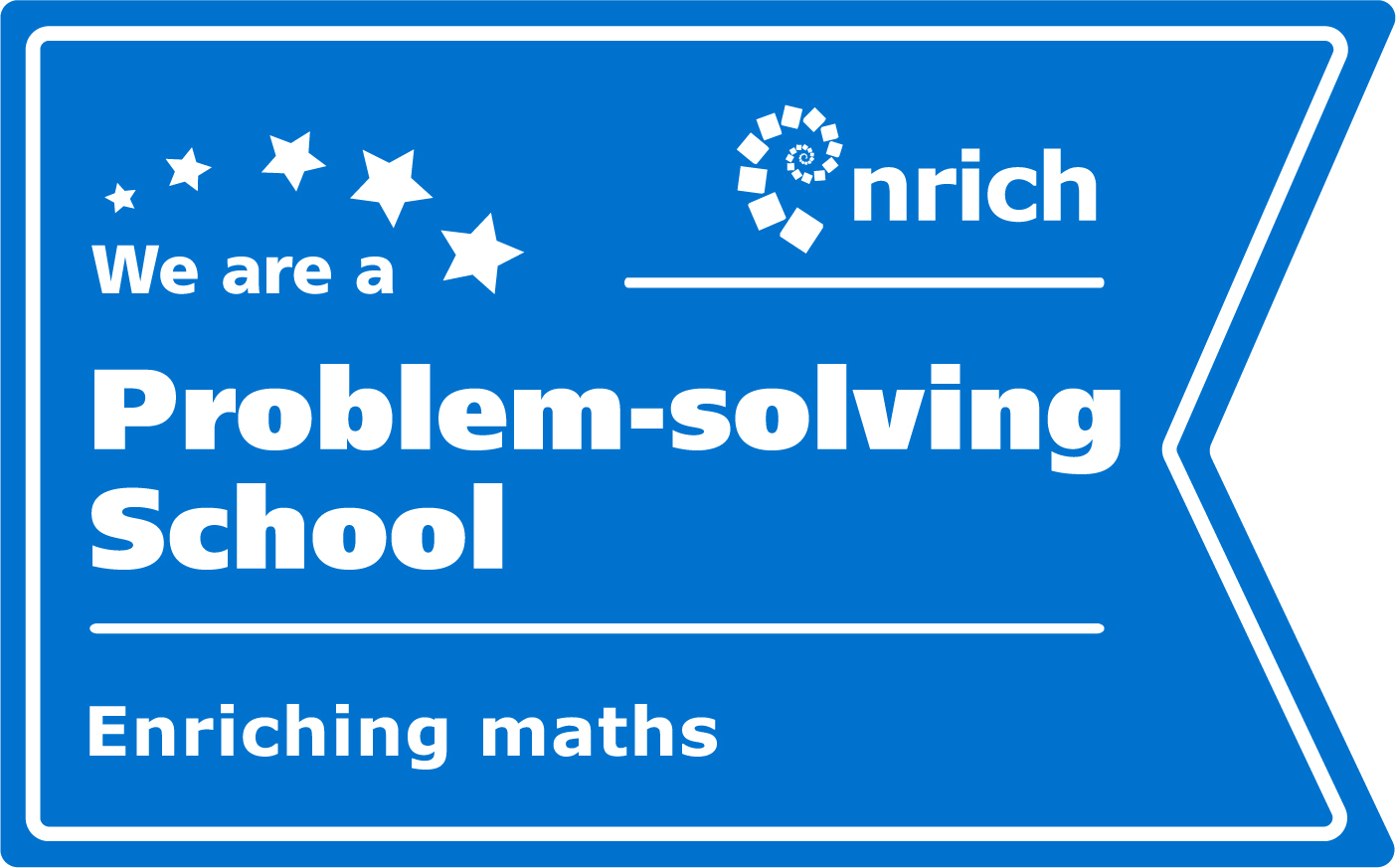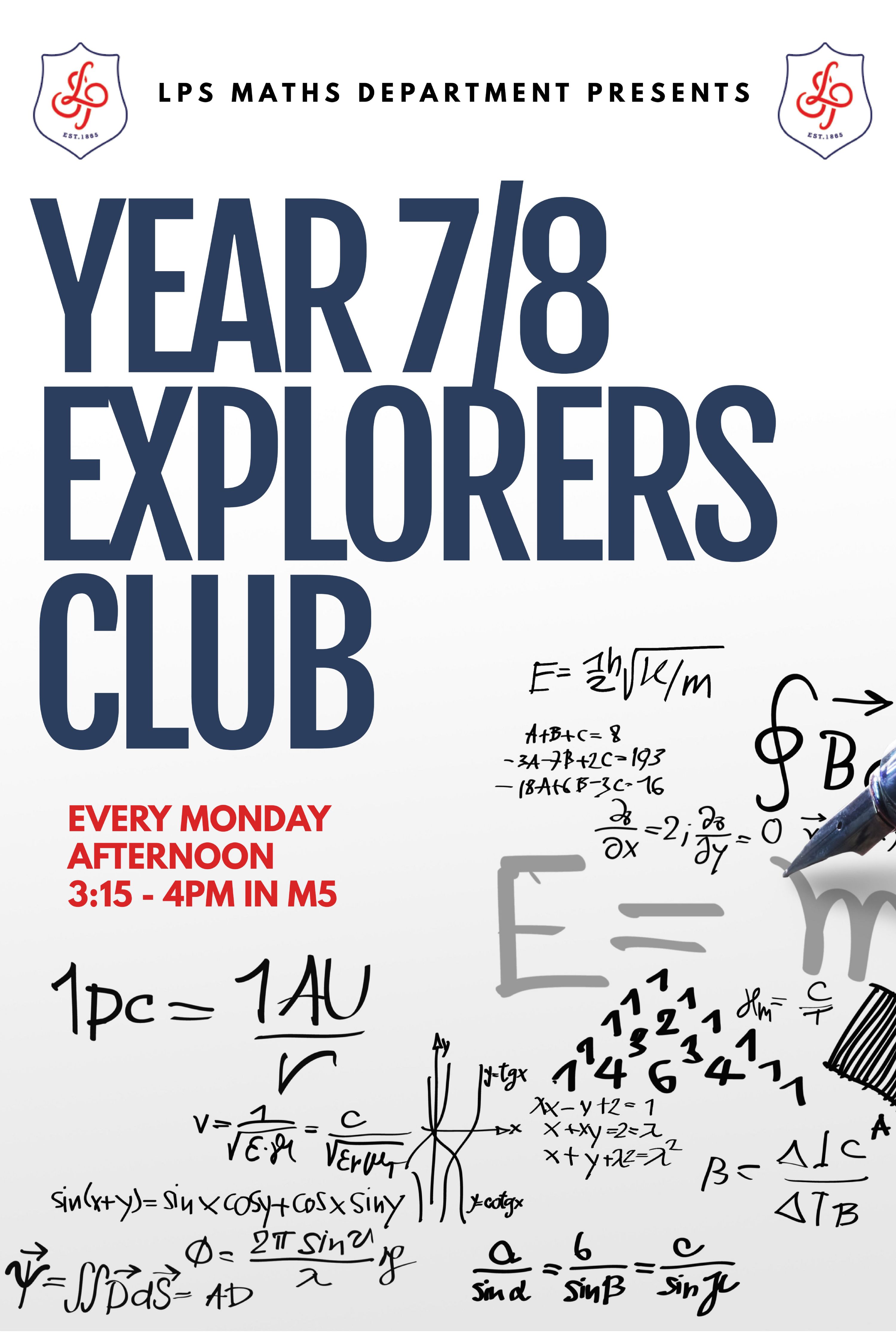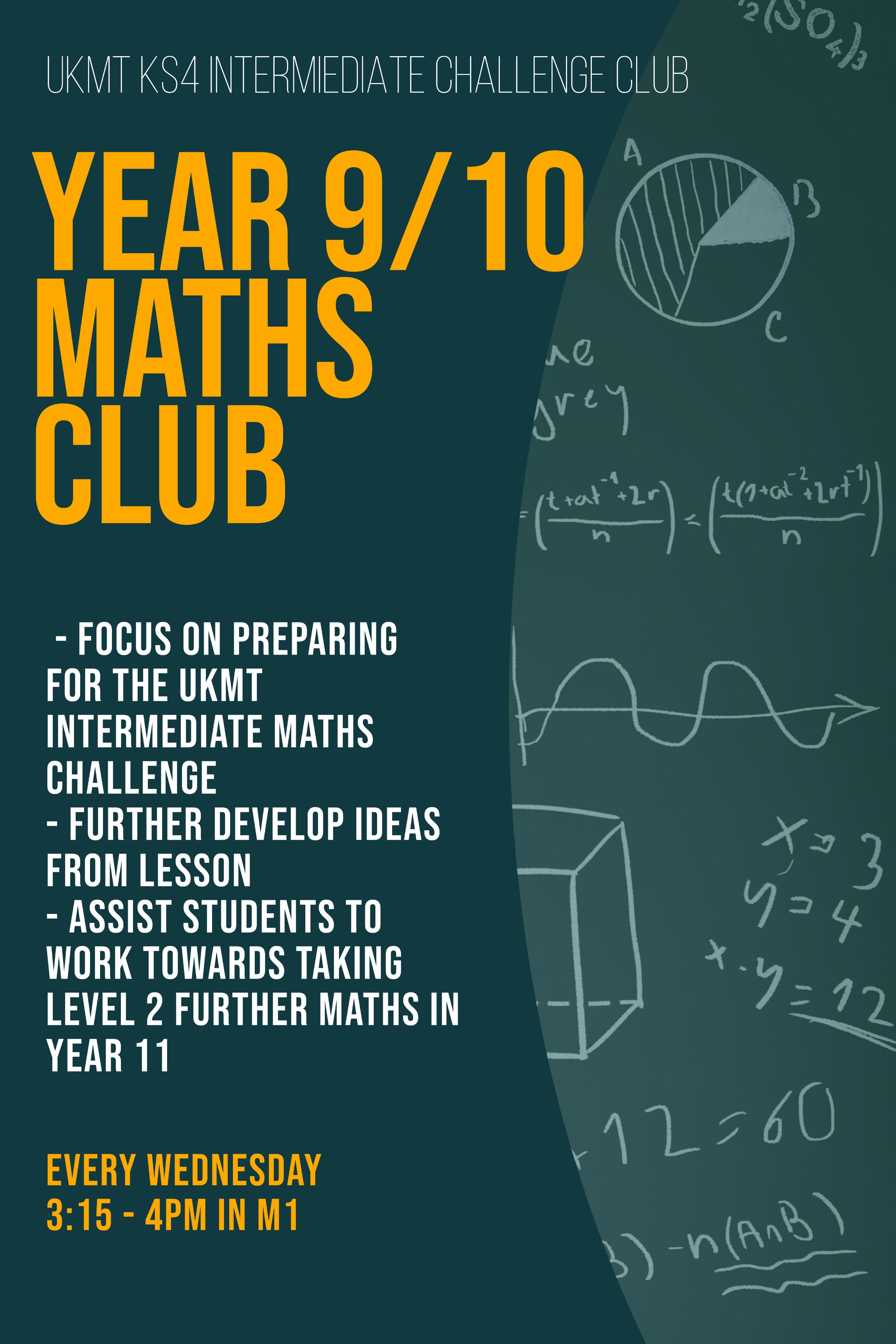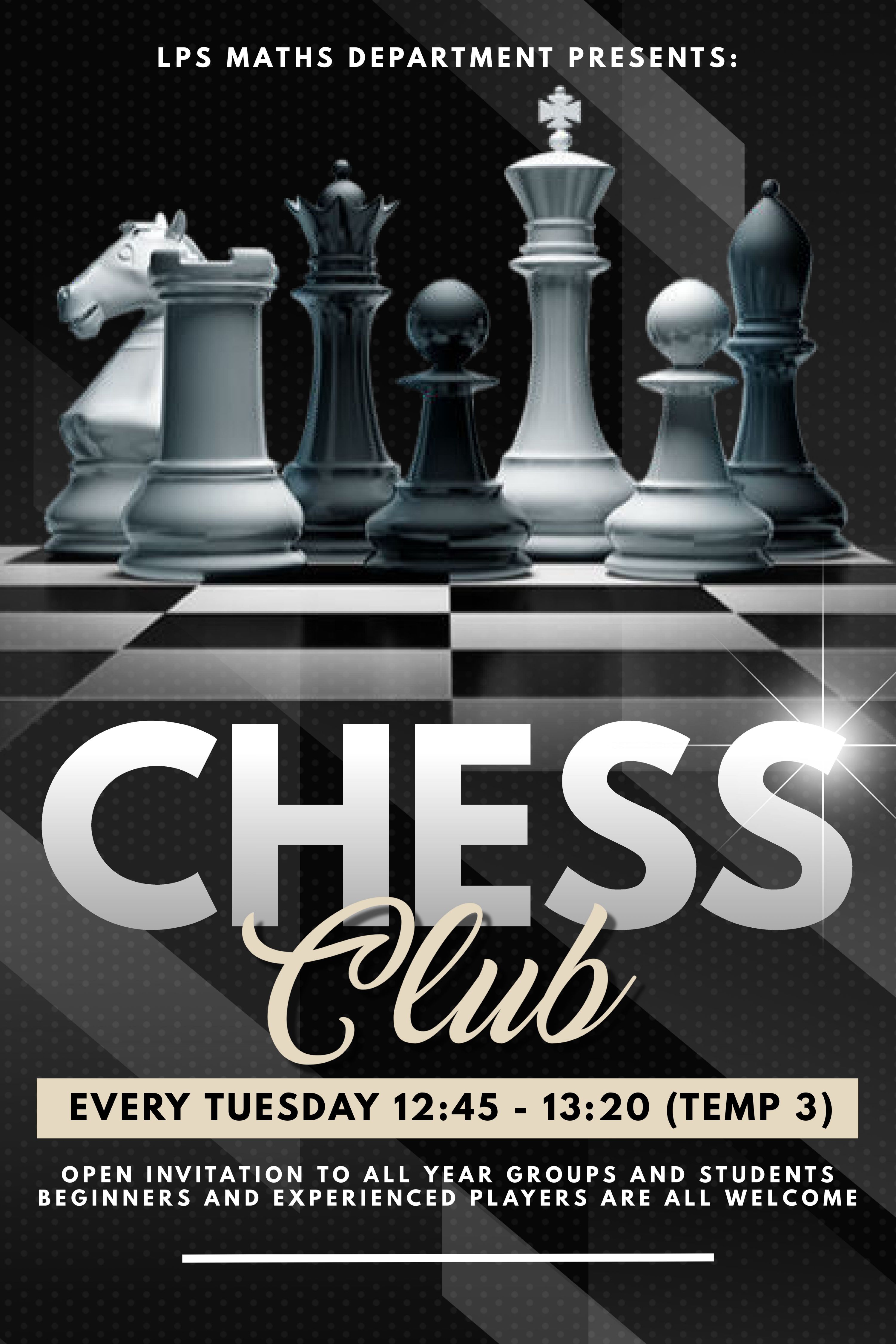Maths
In the mathematics faculty we aim to inspire the mathematician in every student, developing fluency and confidence in using maths to reason and solve problems. We seek to do this without placing limits on the attainment of any student and while developing universal human values including anti-racism and challenging sexism, homophobia and other forms of discrimination.

It MUST be a scientific calculator. The one we would recommend is the CASIO FX-85GTX. The cheapest we have found it is at Asda for £12. We would recommend marking your calculator in permanent marker with your name-we can help with this if needed.
----------------------------------------------------------------------------------------------------------------------------------------
Below are the main units for each year group. There is a link at the top of each year to a more detailed learning journey spelling out the key mathematics in each unit and with each unit there is a link to a fully detailed unit plan showing exactly what students will be learning. Some units start in one term but run over into the next term.
Year 7
Year 8
Year 11
A Level
Year 12 Unit 1: Proof Algebra and Logarithms
Year 12 Unit 2: Everything Binomial
Year 12 Unit 3: Sequences and Series
Year 12 Unit 4: All About Functions 1
Year 12 Unit 5: Coordinate Geometry
Year 12 Unit 6: All About Functions 2
Year 12 Unit 8: Differentiation
Year 12 Unit 9: Introduction to Statistics
Year 13 Unit 2b: Integration 2
Year 13 Unit 4: Kinematics with Calculus
Year 13 Unit 6: Dynamic/Normal Distribution
Clubs, National Maths Competitions, Trips and Enrichment



NATIONAL MATHS COMPETITIONS
We enter a large number of students for the Junior, Intermediate and Senior Maths Challenges – national competitions run each year by the UK Maths Trust. Many gain certificates, and we have had students qualify for the follow-up “Kangaroo” national maths competitions too.
TRIPS AND ENRICHMENT
We try to enrich students learning of mathematics by integrating visits and trips wherever possible. This year we have done or plan to do:
Year 7: We hope to run a reward trip to Harry Potter studios just north of London as a reward trip for students who do particularly well in the Proportional Reasoning unit which explores this key area of maths through the Harry Potter films and books
Year 8: We hope to take all year 8 students on trips to the British Museum in central London to see some of the first units of measurement used in ancient Mesopotamia- and do a maths trail round the museum. This links to the Measuring the World unit students do at the start of year 8.
Year 9: We have taken all year 9 on a day out in central London where they walk around many key sites and do a maths trail
Year 10: We are taking all year 10 to Greenwich Park to visit the observatory and do a maths trail
Year 11: We have taken over 30 year 11s on a reward trip to Bletchley Park – the home of World War Two code breaking led by mathematician Alan Turing-chosen for their learning ethos over the autumn term.
Year 12 and 13: We are taking all sixth form maths students on a weekend residential to the Peak District in May, to give intensive support at this crucial time of year. We have also taken year 13 students to take part in the recording of the BBC/Royal Institution Christmas Lectures.
Cross Curricular Links
| Language, including oracy, and vocabulary a constant theme through all | BOLD are things already done; lighter type things to be introduced next year |
| ALL YEARS BLACK HISTORY MONTH (October) | SCIENCE; CITIZENSHIP, HISTORY: As part of whole celebration, in maths we will also show the film HIDDEN FIGURES to all classes over 2 lessons and preface it with a discussion of the mathematics of orbits (parabolas, ellipses, hyperbolas) appropriate to different year groups and follow it with discussion of issues raised in the film. |
| ALL YEARS LGBTQIA+ MONTH (February) | COMPUTING, CITIZENSHIP, HISTORY: As part of whole celebration, in maths we will also have lessons - appropriate to each year group-on ALAN TURING and the MATHS OF COMPUTING (binary; algorithms) |
| Year 7 | |
| Unit | Links |
| Integers and Building a Classroom |
CITIZENSHIP: Group working skills HISTORY: Hypatia, Alexandria and Diophantine Equations; Robert Recorde and equals, and plus and minus symbols; Gauss and Fundamental Theorem of Arithmetic |
| Language of Maths |
HISTORY: Euclid, Greece and Egypt SCIENCE: Variables in formulae ENGLISH: imaginative writing in story for assessment explicitly linked to English COMPUTER SCIENCE: Binary, Logic, Algorithms and the language of digital technology |
| Proportional Reasoning |
ENGLISH: Harry Potter books -and films- a key theme in this unit and students encouraged to read them FOOD TECH: Recipes extensively used in this unit |
| Rational Numbers | HISTORY: Egypt and fractions; India and origins of Zero and Brahmagupta and negatives (use of BBC programmes and comprehension exercises); John Venn and origin of Venn diagrams |
| Grid Algebra 1 |
HISTORY: Al Khawirizmi and Islamic origins of algebra (including poster/essay HW on this) SCIENCE: Algebra used in scientific formulae |
| Introduction to Shape |
HISTORY: Greek and Roman roots of shape names and concept names; Islamic tiling patterns ART: Use of shapes in design and buildings |
| Geometric Reasoning 1 | HISTORY: Origins of 360 degrees in ancient Mesopotamia; Euclid and geometric reasoning; historical development of different ways of measuring angles |
| Collecting and Representing Data | CITIZENSHIP: Finding out about our school and our students |
| Estimation 1 | SCIENCE: Contexts taken from science used for estimation/rounding |
| Year 8 | |
| Measuring the World | HISTORY: Historical development of units; origins of the metric system in French revolution; History of imperial system; visit to British Museum and units based trail around ancient Mesopotamia |
| Fractions, Decimals and Percentages | HISTORY: History of decimal fractions from China to the Arab world to Simon Stevin and John Napier and history of percentage notation as shorthand in mediaeval manuscripts |
| Indices and Roots | HISTORY: Rene Descartes and origins of modern index notation |
| Introduction to Ratio |
GEOGRAPHY: Ratios and scales in maps DESIGN AND TECHNOLOGY: Ratio and scales in models ART: Ratio in paint mixes and shades- a key activity in this unit |
| Grid Algebra 2: |
HISTORY: Development of equations and symbolism for solving them SCIENCE: Equations occurring in science used as contexts |
| Standard Form: | SCIENCE: Whole unit relates to use of Standard Form in scientific contexts such as astronomy, chemistry, atomic physics, biology etc |
| Introduction to Probability | SCIENCE: Assessing risk a theme in some activities and exercises |
| Representing and Interpreting Data | HISTORY AND GEOGRAPHY: Use of data on historical development of Poplar |
| Year 9 | |
| Developing ideas on Ratio |
FOOD TECH: Mixing drinks and scaling recipes GEOGRAPHY: More on map scales |
| Similarity | DESIGN AND TECHNOLOGY: Scales in models |
| Geometric Reasoning 2 | HISTORY: Euclid and his Elements |
| Percentages | CITIZENSHIP: Credit cards, banks, interest |
| Averages | CITIZENSHIP: Race and inequality in society is the central theme of whole unit |
| Pythagoras | HISTORY: History of the theorem, ancient Mesopotamia Egypt; who was Pythagoras? |
| Graphs and Functions 1 | HISTORY: Rene Descartes and coordinates; Euler, Leibniz and the modern idea of and notation for a function |
| Circles | HISTORY: From Babylon and Egypt to Archimedes and Euler-the history of Pi |
| Sequences, Patterns and Iteration | HISTORY/SCIENCE/ART: Fibonacci sequence and its importance |
| Estimation 2 | SCIENCE: Examples from Science used for context |
| Year 10 | |
| Proof | HISTORY: Different types of proof - Greeks and geometric and number proofs to Arabic scholars and algebraic proof. |
| Reasoning with and Interpreting Data | GEOGRAPHY/HISTORY/CITIZENSHIP: Whole unit is based on interpreting, discussing and reasoning with graphs and data on a) Climate crisis b) Income inequality c) Racial inequality d) Gender inequality |
| Graphs and Functions 2 | SCIENCE: Lost of the functions and graphs used are directly related to science |
| From 2D to 3D |
HISTORY: Euclid and Platonic Solids; Greek and Roman origins of language and names of shapes and concepts; Conic Sections in ancient world ART/DESIGN: Use of regular solids in building and design SCIENCE: Regular solids in science-crystal forms |
| Deepening Ratio and Proportion with Algebra | SCIENCE: Laws of science involving direct and inverse and other proportions (e.g. gravity, Coulomb etc) |
| Construction and Geometry | ART/DESIGN: Use of constructions and construction methods in drawings solving problems |
| Probability | SCIENCE/CITIZENSHIP: Awareness of and assessment of risk in contexts such as medical/pandemic/lottery etc |
| Trigonometry | HISTORY/GEOGRAPHY/SCIENCE: History of trigonometry and use in areas such as science (e.g. astronomy; ballistics and projectiles) and surveying and map making |
| year 11 | ALL STUDENTS: |
| GEOGRAPHY: Use of real maps and compasses in learning about bearings-including maps of London, South Downs and Bangladesh | |
| SCIENCE: Science used as contexts in studying formulae; equations; graphs and also in probability | |
| SOME STUDENTS: HISTORY: Bletchley Park reward trip for 40 students showing best ethos in run up to Autumn PPE (4 from each set) | |
| HISTORY: Euclid's Elements and proof of circle theorems(Students doing Higher) | |
| GEOGRAPHY: Selected students joining sixth form residential in Peak District which involves learning about physical geography and map reading | |
| Year 12 and 13 | |
| PROOF | HISTORY: Euclid and primes; Fermat and his theorem |
| LOGS | HISTORY: Napier and his bones |
| BINOMIAL | HISTORY: Pascal, Newton and infinite series binomial SCIENCE: Binomial applied in contexts |
| SEQUENCES | SCIENCE: Modelling with sequences in context; HISTORY: Archimedes and approximating Pi |
| FUNCTIONS | HISTORY: Origins of function notation; Bernoulli, Euler and e; History of trig functions SCIENCE: Parametric modelling in astronomical contexts |
| KINEMATICS | SCIENCE: Modelling with sequences in context |
| DIFFERENTIATION | HISTORY: Newton, Leibniz and the origins of calculus and our notations SCIENCE; Modelling with calculus in contexts |
| STATISTICS AND DATA 1 | GEOGRAPHY; HISTORY; SCIENCE: Statistics used in contexts (including Large Data Set) |
| INTEGRATION |
HISTORY: Riemann and Fundamental Theorem of Calculus SCIENCE; Applying integration in contexts |
| PROBABILITY | CITIZENSHIP AND SCIENCE; Probability used in context and in assessing risk (eg disease) |
| TRIGONOMETRY | MUSIC: Harmonic formulae SCIENCE: Applications of trig in modelling (eg tides) |
| EXPONETIAL AND LOGS | SCIENCE/ ECONOMICS/GEOGRAPHY: Modelling with exponentials; reducing to linear lawa with logs in contexts |
| VECTORS and DYNAMICS |
SCIENCE: Modelling with vectors and in dynamics HISTORY: Galileo, Newton and his laws |
| NORMAL DISTRIBUTION | SCIENCE/ CITIZENSHIP: Uses and abuses of Normal Distribution |
| HYPOTHESIS TESTING | SCIENCE: Applications of hypothesis testing in contexts |
